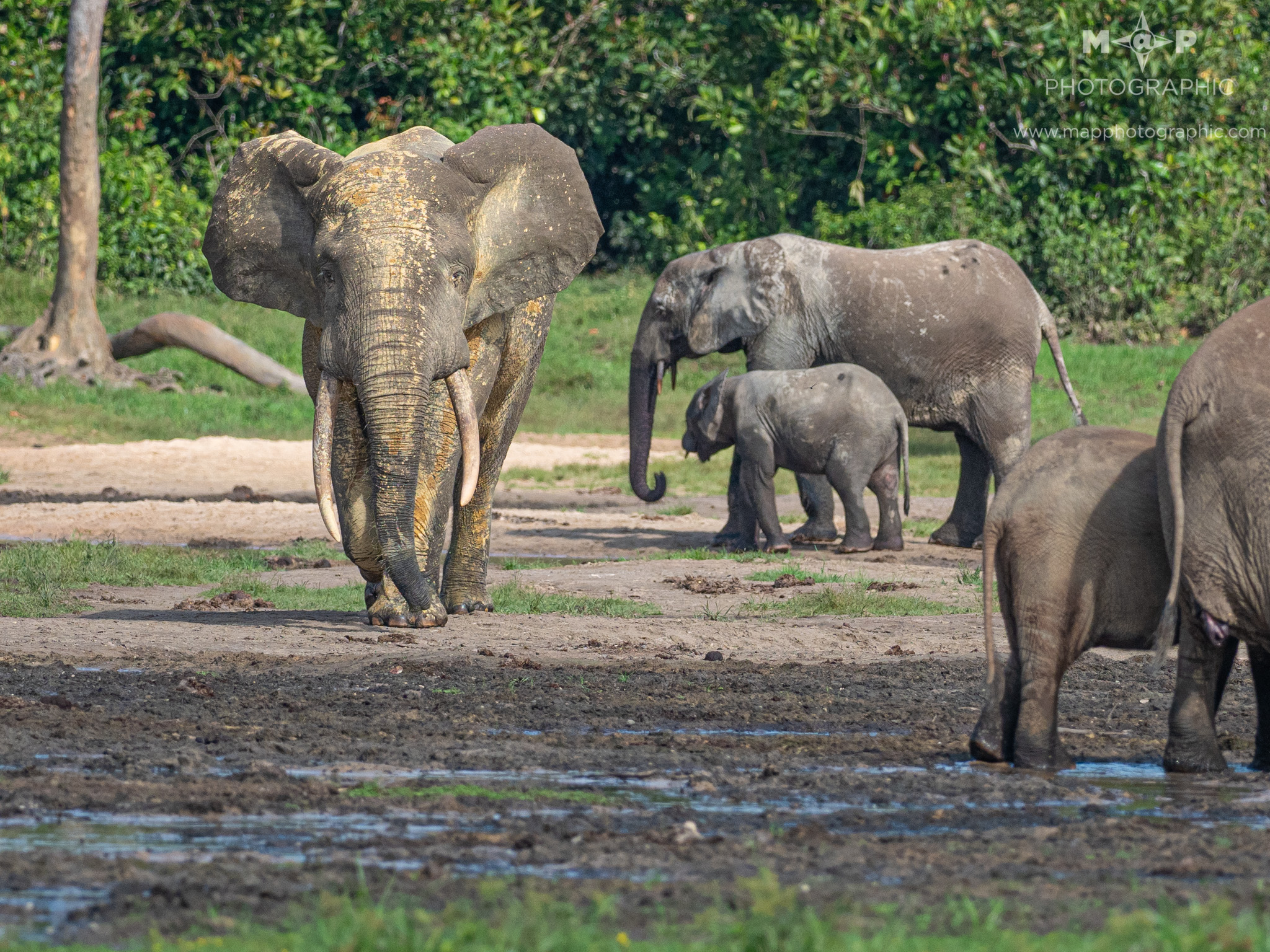
Sangha Lodge MammalFest- CAR
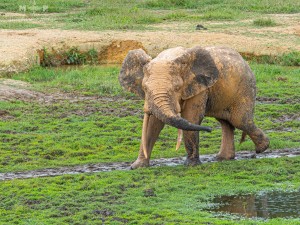
Forest bull elephant, Dzanga Bai
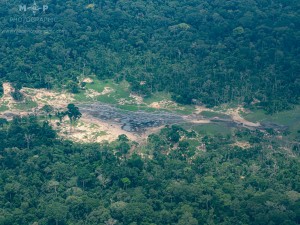
Dzanga Bai , shot from the charter flight from Bayanga to Bangui
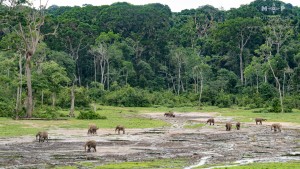
Dzanga Bai
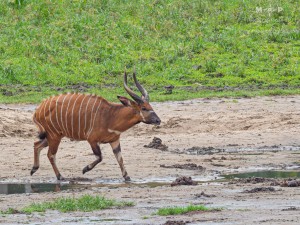
Forest bongo, Dzanga bai
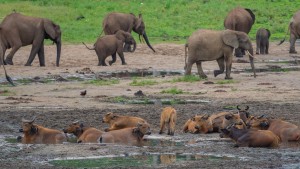
Forest elephants and forest buffalo, Dzanga bai
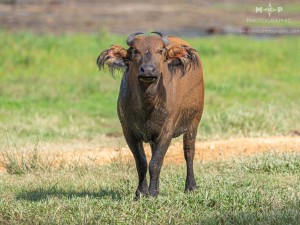
Forest buffalo, Dzanga Bai
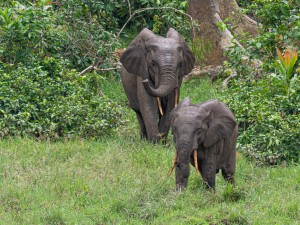
Elephants emerge from the forest, Dzanga Sangha Special Forest Reserve, CAR
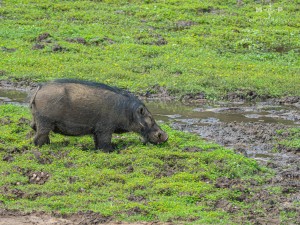
Forest pig, Dzanga Bai
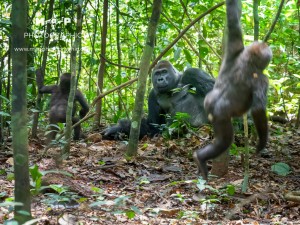
King Kong! Western lowland gorillas at Dzanga Sangha Special Forest Reserve
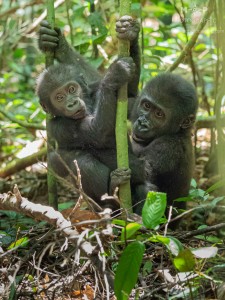
Western lowland gorillas, Dzanga Sangha Special Forest Reserve
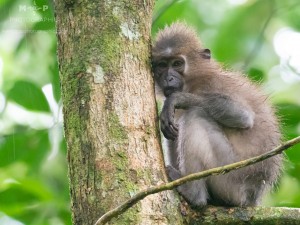
Grey-cheeked mangabey, Dzanga Sangha Special Forest Reserve, CAR
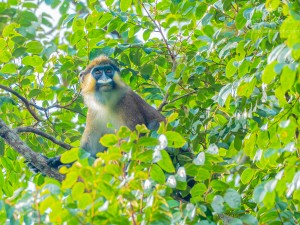
Moustached guenon monkey, Dzanga Sangha Special Forest Reserve
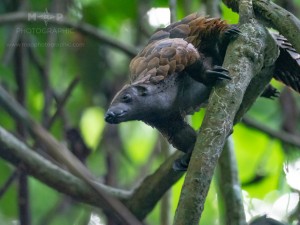
Wild pangolin near Sangha Lodge
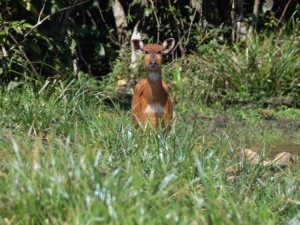
Sitatunga, Dzanga Sangha Special Forest Reserve
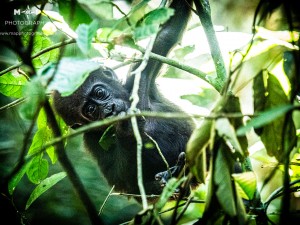
Western lowland gorilla youngster, Dzanga Sangha Special Forest Reserve
In late August/early September 2019 my husband and I had a superb and exciting trip to the Dzanga-Sangha Special Reserve in Central African Republic (CAR). We booked the trip directly with Sangha Lodge (www.sanghalodge.com). As described in other reports, it’s an organized tour/plane-share, where you spend 7 nights at the lodge, which includes everything except your international flights. Despite any government warnings that might discourage travel to CAR, the statements on Sangha Lodge’s website proved accurate- there were no perceived dangers and travel went without a hitch. We chose the nonstop from Nairobi to Bangui, as did the other guests, were met by a Sangha Lodge representative/handler there, and were soon on a charter flight to Bayanga, the gateway to Dzanga-Sangha. After a bumpy 30 minute drive in the Lodge’s Land Rover through small villages filled with children waving and yelling hello to us , we arrived at the Lodge, situated on the Sangha River. Beautiful spot, you definitely feel like the long journey brought you somewhere very remote.
Though experienced in the African bush, this was our first real rainforest experience on the continent, and it is so different! Ants are always on your mind since there are billions of them , and we heard tales at the first meal of driver ant invasions, which turned out to be relevant on our trip. We had to spend one night in an unused chalet that was due for renovation since our chalet was being invaded by a few million of them. No big deal, and to be expected in such a remote place. Though ever present, ants are not routinely crawling on you or a nuisance at all except if they invade , which isn’t that frequent.
Jungle wildlife doesn’t always reveal itself right away, and the place requires a certain amount of Zen-like melding with the place. That said, we saw tons of wildlife, including plenty of mammals. Around camp, there aren’t many mammals apparent, but they are there. We saw de Brazzas monkeys, civet, genet, tree hyrax, and hammer bats. We did a night walk to see many of these, as there isn’t much threat from predators (leopard present but extremely rare to see), and forest elephants are not known to be near camp most months. Definitely do the night walks! Part of the reason we went to CAR and to Sangha Lodge was to see pangolins. We expected to see more of them, not because of anything the Lodge said beforehand, but we only saw the one pangolin in the care of the Sangha Pangolin Project (SPP), run out of the Lodge. She was a wild pangolin, but is tracked all day long until she goes to sleepy and so staffers can bring you to her to observe, which is wonderful. SPP is doing great work and often pangolins rescued by villagers are brought to them. It was a thrill to see and photograph a pangolin (not easy to photograph in the dark jungle lighting), and of course we hope the current trafficking nightmare ends asap.
Other mammal watching occurs inside the Dzanga-Sangha Special Forest Reserve. To get there, a Lodge guide takes you in a Land Rover to either the Dzanga Bai ,about 90 minutes each way, or Bai Hokou, the gorilla trekking area , about 2 hours each way-so there is a lot of transport involved. The dirt/mud tracks are pretty bad-if they were better, transport times could be cut in half. Despite this, the wildlife is awesome at these places.
At Dzanga Bai (bai is a forest clearing), you’re virtually guaranteed very excellent elephant observation, for hours at a time. The walk to the bai is about 40 minutes and beautiful. There are elephants in the forest, so it is important to stay tuned to the sounds around you and to listen to what the tracker tells you to do. On the trail to the bai, you may hear a chattering sound that gets louder and louder as you get closer. If you do, you’ll be greeted by hundreds of beautiful gray parrots as you break out of the forest to the bai, where you quickly climb a set of stairs to a comfortable, covered wooden platform. We saw many, many baby elephants, which is always good news. The elephants did appear skittish; if an unfamiliar sound was heard, they would sometimes run into the forest–a sign to us that poaching is occurring.
We elected to do 2 days at the bai , and besides elephants, we saw sitatunga, forest pigs and though we were not expecting to , one forest bongo, which was gorgeous. They are not common there in August, so we were very lucky! A couple of herds of forest buffalo also made appearances, which was great; they are very handsome beasts and looked comfortable settling deep into the mineral baths. If there are no elephants close to the platform, the guides will take you downstairs and you can get great eye-level photos if you have a decent telephoto lens.
The gorilla trekking is fantastic. After the 2 hours transport to Bai Hokou inside Dzanga-Sangha, you connect with the eco-guards who know generally where the habituated groups are. Our first day gorilla trekking was to see the Mata group, the newest family that is habituated. We only had to walk about 15 minutes to rendezvous with them, but Mata is initially shy, so we followed him for about 40 minutes before he finally stopped. We were rewarded with incredible observation, as Mata turned directly to face us and he is enormous, like King Kong. His offspring were super-fun and charismatic, as well. You only get 1 hour total to spend with them, so we had 20 minutes to be with them while they were relaxed and my husband got outstanding photographs, some of which I’ll post here. We elected to pay the extra and do another day of gorilla trekking ( the Sangha Lodge package includes one day), and spent time with the Makumba group. Though much longer habituated, they were also shy and Makumba never would turn to face us, only showing us his silverback. No matter, the time spent is as awesome as you have always read. Dzanga-Sangha is very , very remote. Unlike in Uganda, you aren’t having to traipse thru tea fields to see these gorillas . You are in the true wild.
Close to Bai Hokou, you can walk to a few other bais in hopes of seeing wildlife. We did and saw one elephant, a sitatunga, and a herd of forest buffalo. We also saw a few birds (fly catchers, ibis, etc) and some kind of python that quickly slithered into the water we were about to walk thru. I will note here that the guiding wasn’t five star on the trip. If we had spoken French, it might have been better, but in general, because to the remoteness and lack of high numbers of tourists, there doesn’t seem as much incentive as in other places for high quality guides. I hope tourism increases, and guiding quality follows.
Also close to Bai Hokou is a group of habituated grey-cheeked mangabeys (monkeys), which are fun to spend time with.
At the entrance to the reserve, you should get out of your vehicle (near the Doli Lodge) and look for birds and other primates. It’s here we saw the incredibly cartoonish-looking moustached guenons. Just fantasic creatures!
The Sangha Lodge is great, with conservation-hero owners Rod and Tamar Cassidy (they have A LOT of stories, get them out of them). On our last day there, a forest cobra made an appearance. They are extremely poisonous, but problems are extremely rare as they stay away from humans.
GO TO DZANGA-SANGHA. Stay at Sangha Lodge. Go again and stay at Doli Lodge, which looks beautiful. Then go back to Sangha Lodge, as they have lots of exciting things planned for the future. Tell your wildlife- loving friends! Because of its remoteness, the trip isn’t cheap, but it is 100% worth it. Though we’d never want a place like this developed or over-touristed, they could definitely use more of us, and the rewards for going are immense. Enjoy!
-Nancy and Mike , Annapolis, Maryland USA
2 Comments
Leave a Reply
You must be logged in to post a comment.


JoEllen Arnold
Thank you for this detailed report. I have long wanted to visit this area and am now more interested in pursuing a stay.